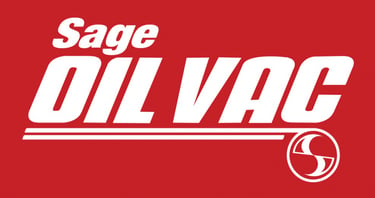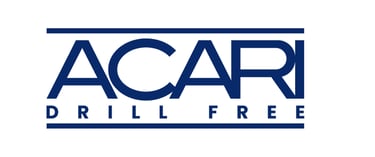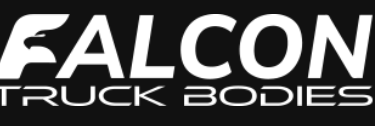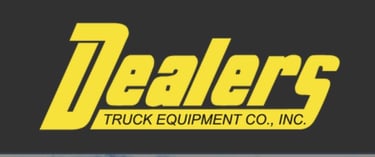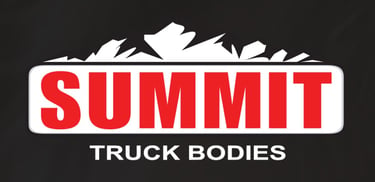~ Created by fleet pros, for fleet pros - Your voice of the Industry ~
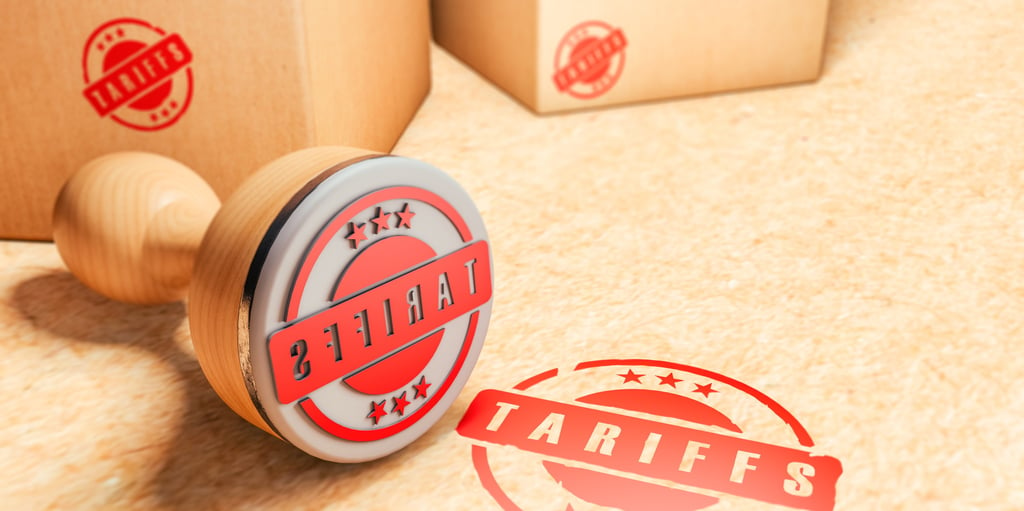

How the 25% Tax on Imported Trucks Will Reshape Your Sales Strategy
By: Travis Wolff
Commercial Truck Specialist | Driven by Details, Fueled by Curiosity
A Seismic Shift in the Heavy-Duty Market
The heavy-duty truck market is on the cusp of its most significant disruption in decades. The recent announcement of a 25% tariff on all imported Class 7 and 8 trucks, set to take effect November 1, 2025, is not just another headline—it is a fundamental shift in the competitive landscape that will redefine pricing, production, and purchasing strategies for the foreseeable future.
This policy shock is not happening in a vacuum. The industry is currently navigating a period of weak freight demand, sluggish orders, and broad economic uncertainty, making fleets—especially smaller ones—highly sensitive to any cost increases. The tariff will act as an accelerant on these existing pressures, creating both significant challenges and unprecedented opportunities.
For the prepared sales professional, this tariff is more than a challenge; it is a powerful catalyst. It creates a clear and urgent deadline for customers, reshuffles the competitive deck among manufacturers, and opens the door for a more strategic, value-based sales conversation.
This report provides a comprehensive analysis of the tariff's multifaceted impact—from the factory floor to the freight invoice—and offers a detailed playbook for leveraging this disruption to drive sales and solidify customer relationships.
The Tariff Explained: History Repeats Itself
The Trump administration has announced a 25% tariff on all imported medium and heavy-duty trucks, with an effective date of November 1, 2025. This includes a wide range of commercial vehicles, from delivery trucks and buses to the Class 8 tractors that form the backbone of the nation's supply chain.
The stated rationale for the measure is the protection of U.S. manufacturers from what is described as "unfair outside competition," with the administration citing national security as a key concern.
The policy directly targets finished vehicles entering the United States from any foreign country, but its most immediate and profound impact will be on the highly integrated North American supply chain—particularly trucks produced in Mexico for the U.S. market.
An Echo from the Past: The "Chicken Tax" of 1964
To understand the potential long-term impact of this new policy, it is essential to look back 60 years to a trade dispute that permanently altered the American automotive landscape.
In 1964, in response to tariffs placed by France and West Germany on U.S. chicken, President Lyndon B. Johnson imposed a retaliatory 25% tariff on several European goods, most notably light trucks. This "Chicken Tax," as it came to be known, fundamentally reshaped the American pickup and van market.
Before the tax, vehicles like the Volkswagen Type 2 pickup were gaining traction. After the tariff was imposed, U.S. imports of "automobile trucks" from West Germany fell by two-thirds in a single year, and popular models from Volkswagen, Datsun, and Toyota practically disappeared from the U.S. market.
The tax created a protected market where domestic manufacturers like Ford and General Motors could thrive for decades with limited foreign competition in the lucrative light truck segment.
The most crucial lesson from this historical precedent lies not in the initial market shock, but in the long-term strategic response from foreign manufacturers. Over time, to avoid the steep and persistent tariff, Japanese and other automakers did not cede the market; they invested billions of dollars to build assembly plants inside the United States and, later, in Canada and Mexico under the North American Free Trade Agreement (NAFTA) and its successor, the United States–Mexico–Canada Agreement (USMCA).
This history demonstrates that a substantial tariff acts not just as a tax but as a powerful, multi-decade incentive for domestic manufacturing investment.
The new heavy-duty truck tariff creates the exact same economic calculus for today's OEMs. While their initial reaction will be to pass costs to consumers, their long-term strategic response will almost certainly involve a reevaluation of their North American manufacturing footprints—likely leading to future announcements of U.S. plant expansions or new construction to regain cost parity with their domestically based competitors.
The Industrial Ripple Effect: A Sudden Reshuffling of the Competitive Deck
The tariff's immediate impact is not uniform across the industry. It creates a clear and sudden division between manufacturers based on their production geography, instantly creating winners and losers in the new market reality.
High Exposure: Reliance on Mexican Production
Navistar (International): With an estimated 98% of its vehicles for the U.S. market imported from its massive plant in Escobedo, Mexico, Navistar is the most vulnerable OEM to this new policy. Its reliance on cross-border production places it at a significant and immediate cost disadvantage.
Daimler Truck North America (Freightliner): As the market share leader, Daimler also faces significant exposure. While it operates plants in North Carolina, it relies heavily on its large-scale facilities in Saltillo and Santiago Tianguistenco, Mexico, for a substantial portion of its production—including the popular Freightliner Cascadia models. Approximately 83% of its vehicles sold in the U.S. are imported from Mexico, making it highly susceptible to the 25% levy.
Low Exposure: Primarily U.S. Production
Volvo Group (Volvo Trucks & Mack Trucks): Like PACCAR, Volvo Group produces nearly all of its trucks for the U.S. market domestically and is shielded from the direct impact of the tariff. Volvo's VNL models are assembled at its New River Valley plant in Dublin, Virginia, and Mack trucks are built in Macungie, Pennsylvania.
PACCAR (Peterbilt & Kenworth): PACCAR is largely insulated from the direct tariff on finished vehicles and is positioned as a primary beneficiary. The vast majority of its Class 8 trucks for the U.S. market are assembled in American facilities: Peterbilt in Denton, Texas, and Kenworth in Chillicothe, Ohio, and Renton, Washington.
Manufacturers’ Strategic Response
Immediate Price Hikes: Affected OEMs will have no choice but to pass the 25% cost increase directly to customers for any vehicle imported after the November 1 deadline.
Component Cost Increases: Even U.S.-built trucks will face price pressures from tariffs on imported components and raw materials like steel and aluminum.
Supply Chain Scramble (The USMCA Factor): Manufacturers will rush to meet North American content thresholds to qualify for tariff exemptions.
Production Shuffling: OEMs may shift production to U.S. plants where possible, though most are already near capacity.
Customer Impact: Higher Prices Across the Board
A 25% tariff on a Class 8 tractor—typically priced between $150,000 and $200,000—means a sudden price jump of $35,000 or more per unit. This will have drastically different effects on small independent operators versus large corporate fleets.
The “Mom and Pop” Squeeze
Small carriers and owner-operators, who form the vast majority of the trucking industry, will bear the brunt of this policy.
Capital Crisis: Thin margins and limited access to credit make a $35,000 cost increase prohibitive.
Defer, Repair, Buy Used: These operators will delay purchases, repair older trucks, and turn to the used market.
Competitive Disadvantage: Rising operational costs will further widen the gap between small and large fleets.
The Corporate Fleet Calculation
Large national carriers will take a more strategic approach:
Absorbing the Blow: Larger fleets can handle higher costs but will still face multi-million-dollar budget hits.
Strategic Fleet Planning: Expect pre-buying before the tariff deadline and a pivot toward domestic brands.
Negotiating Power: Major carriers will use their purchasing leverage to negotiate better deals or protection clauses.
The End of the Line: Higher Prices for Everyone
The trucking industry is the circulatory system of the U.S. economy. Higher truck prices inevitably mean higher freight rates and, eventually, higher consumer prices.
This inflationary effect builds gradually, typically peaking 12–18 months after implementation as contracts renew and costs flow through the supply chain.
Two key shifts will follow:
A surge in demand for late-model used trucks, particularly domestic brands perceived as tariff-safe.
Increased demand for parts and service as fleets hold onto equipment longer—creating major opportunities for dealerships with strong service operations.
The Sales Professional’s Playbook: Turning Tariffs into Opportunities
Periods of disruption separate professionals from order-takers. Knowledge and strategy will define success.
Strategy 1: Sell Stability and Predictability (Domestic Brands)
Safe Harbor Pitch: “Our trucks are built in the USA and shielded from the tariff.”
Reframe the Value Conversation: Focus on the massive tariff avoidance advantage.
Highlight Total Cost of Ownership (TCO): Show how domestic models now deliver a clear financial edge.
Strategy 2: Become a Strategic Advisor (All Brands)
Educate customers about the tariff’s real impact.
Help fleets plan purchases and stagger replacements for cost stability.
Use the "Chicken Tax" analogy to demonstrate expertise and credibility.
Strategy 3: Leverage the Strong Used Market (All Brands)
Offer aggressive trade-in values while the used market is hot.
Keep customers within your dealership ecosystem by matching them to used units if new ones are cost-prohibitive.
The Road Ahead is Paved with Opportunity
The 25% tariff on imported heavy-duty trucks is a market-altering event. It will increase new truck prices, strain smaller carriers, and boost the used truck and service sectors—while creating a durable competitive advantage for domestically produced brands.
For sales professionals, this is not a threat but an invitation. By becoming a trusted advisor—educating customers, creating urgency, and leveraging every financial and operational tool available—you can transform disruption into your biggest opportunity of the year.
The road ahead will be complex, but for those who are prepared, it is paved with opportunity.
10/31/25 - Amendment
In our initial analysis, we explored the seismic 25% tariff on imported Class 3-8 trucks, focusing on the "High Exposure" of import-heavy brands versus the "Safe Harbor" of domestic manufacturers. We discussed the potential for $30,000+ price hikes and how sales professionals could leverage this as an urgent closing tool. After further analysis and watching the market's initial reaction, it's clear we must refine this perspective.
The 25% headline number, while alarming, is not the real story. The media will continue to claim a 25%, $30,000+ overnight price hike. This would collapse the trucking economy. It's not going to happen like that. The real, more insidious impact is this: a guaranteed, permanent $5,000 to $8,000 price increase on every truck imported from outside the U.S. And with that, the secret sauce of the import-heavy brands is gone. For years, the "cheaper truck" was cheaper for one reason: it was built cheaply in a foreign plant. That was its only competitive advantage. Now, that advantage has been erased by a political poker chip.
The cheaply built truck is suddenly just as expensive as the better-built, higher-quality, U.S.-manufactured truck. This is the new reality. The 3.75% "offset" for domestic builders? Let's be honest: it's a crumb, not a cookie. It's not the real story. The real story is that the old TCO models are now obsolete. The game has fundamentally changed. This tariff isn't just a tax; it's a loud, clear message from the White House to American companies: "Get your supply chains back in the States."
We are now paying the price for 30+ years of offshoring manufacturing. We can either point fingers and play the blame game, or we can use our thinkers and find a viable solution to weather this massive economic course correction. The solution is no longer about finding a loophole to avoid the tariff. The solution is to change the purchasing strategy. The only winning move for fleets is longevity.
The new strategy is to stop the short-term trade cycle and invest in a higher-quality, U.S.-built assets that are designed to last longer. The demand for these durable, longlasting domestic trucks is about to surge as fleets flee the unpredictable surcharges and lesser-quality builds of competitors. The new negotiation isn't about the price difference between brands—that's gone. The new negotiation is about securing your fleet's build slot for the quality trucks that are now in high demand. This is a complex financial shift. The "secret sauce" is out, and the only path forward is a fleet designed for a new era of longer ownership and higher quality Trucks.
Let's connect on LinkedIn: https://linkedin.com/travis-wolff
Travis' Bio:
With over two decades of hands-on experience in outside Sales and Service, I’ve honed a strong foundation in relationship management, negotiation, and business development across the automotive and commercial equipment industries. I’m passionate about building enduring client partnerships and driving growth through a deep understanding of market trends and customer needs.
Beyond sales, I bring extensive expertise in service operations, standardized processes, and personnel training—particularly in recruiting and onboarding skilled diesel mechanics for heavy-duty trucks and equipment. As a Continuous Improvement Coordinator, I have expanded my capabilities in new truck sales, warranty processes, and parts management, leveraging Six Sigma methodologies to implement sustainable improvements that elevate organizational performance.
What truly energizes me is forging meaningful connections—whether by helping clients optimize their fleets or mentoring service teams to deliver top-tier support. I thrive on uncovering new ways to streamline operations and add tangible value for all stakeholders. My core objective remains constant: to align business goals with innovative solutions that deliver lasting results.
#HeavyDutyTrucks #TruckIndustry #FleetManagement #SupplyChain #CommercialTrucking #VocationalTrucks #FleetOperations #TruckingNews #TruckMarket #FleetStrategy #TruckTalkU #TruckingBusiness #FleetOwners #TruckManufacturers #TruckDealers #FleetInsights #EquipmentCosts #TradePolicy #USManufacturing #FleetLifecycle


Connect with us!
info@trucktalku.com
P: 817-875-3695
© 2025. All rights reserved.
T
We proudly endorse our great business partners!

